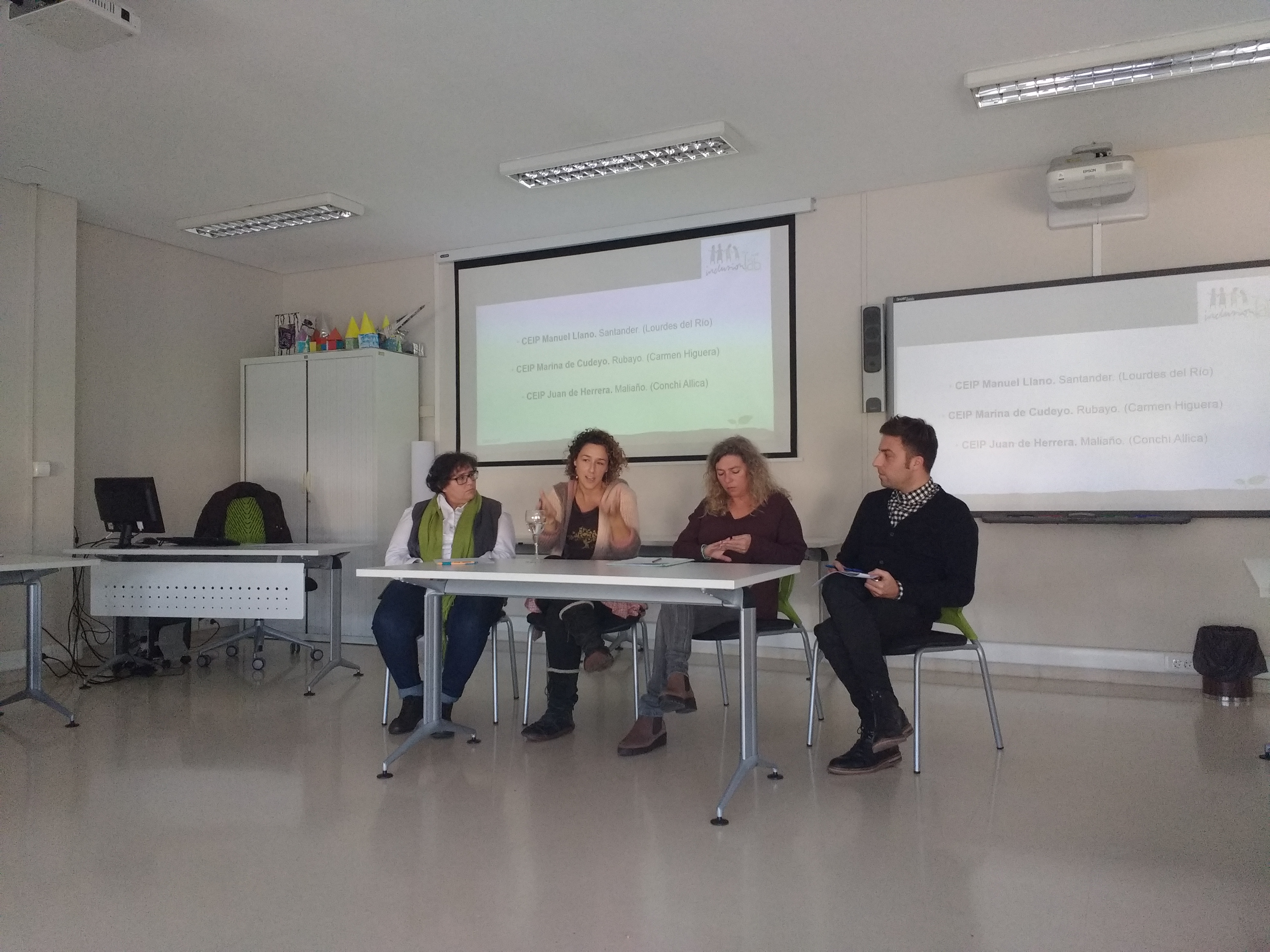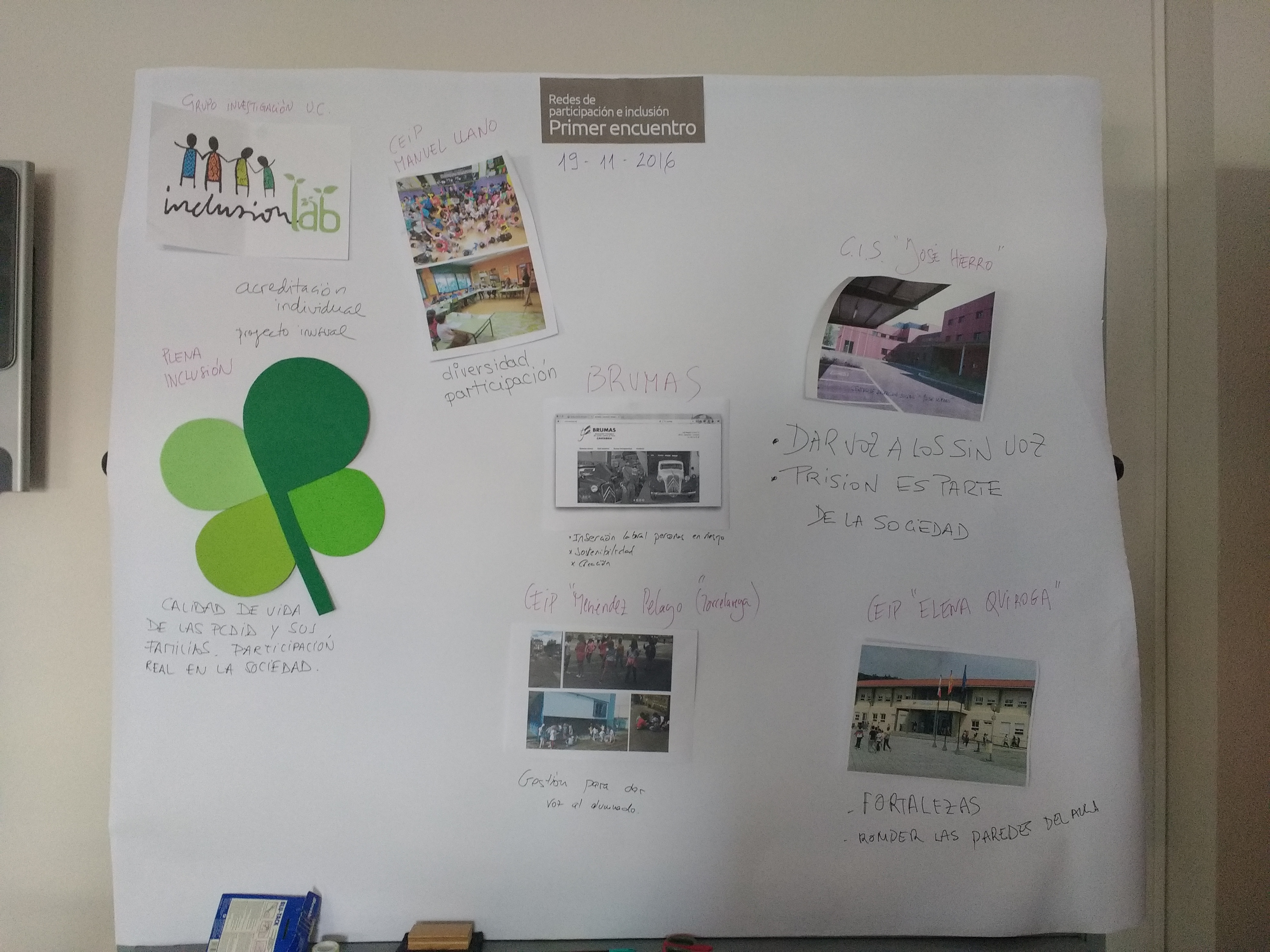First meeting
First meeting 19 November 2016
After our first meeting in the “inclusionLab”, we leave you some reflections, images and recordings of what happened. We want to share here what we have left of that morning of coffee, juice and croissant. Surely we forgot something important for some of the people who attended the meeting. For this reason, we encourage you to “leave your comments” (at the bottom of the page).
We left you five memorable scenes from that day:
1. Sharing the experience
The initial moment dedicated to sharing the experience of previous projects. Lourdes, Conchi and Carmen told us about their experience.

2. Introduction to the project
Then there was a moment of presentation of the project that we set in motion. We leave you some slides that summarize the most important information that Teresa transmitted to us. (there is also audio).
Download from this link the working material we used in the meeting.
3. Innovative social methodologies
By the way! Listen to how we can carry out this experience. We want to bet on the use of innovative social methodologies in research processes, this audio can inspire us and summarizes what they consist of.
Descarga desde este enlace el material de trabajo que utilizamos en el encuentro.

4. Sharing concerns
Another moment in which we share the concerns that perhaps we can expand…
5. Getting Organized
The time dedicated to start thinking about how we’re going to organize ourselves
To know more…
And finally, we leave you the references of some texts that can serve to deepen in some of the things that we discussed in our FIRST MEETING:
- Susinos, T (2012) Las posibilidades de la voz del alumnado para el cambio y la mejora educativa.
- Susinos, T., Rojas, S. y Lázaro, S. (2011) La voz del alumnado y el cambio escolar hacia la inclusión educativa: aprendiendo de la experiencia de un centro de Educación Infantil y Primaria.
- Rojas, S., Haya, I., Lázaro, S. (2012) La voz del alumnado en la mejora escolar: niños y niñas como investigadores en Educación Primaria
- Haya, I. y Allica, C. (2013) Más allá de la dotación tecnológica. Un largo recorrido hacia la construcción de espacios escolares con identidad propia. El caso del CEP Juan de Herrera. (página 955)
- Lázaro, S., Rojas, S., Linares, A. y del Río, L. (2014) ¿Cómo podemos ser más amigos? Proyecto de mejora escolar que escucha la voz del alumnado

